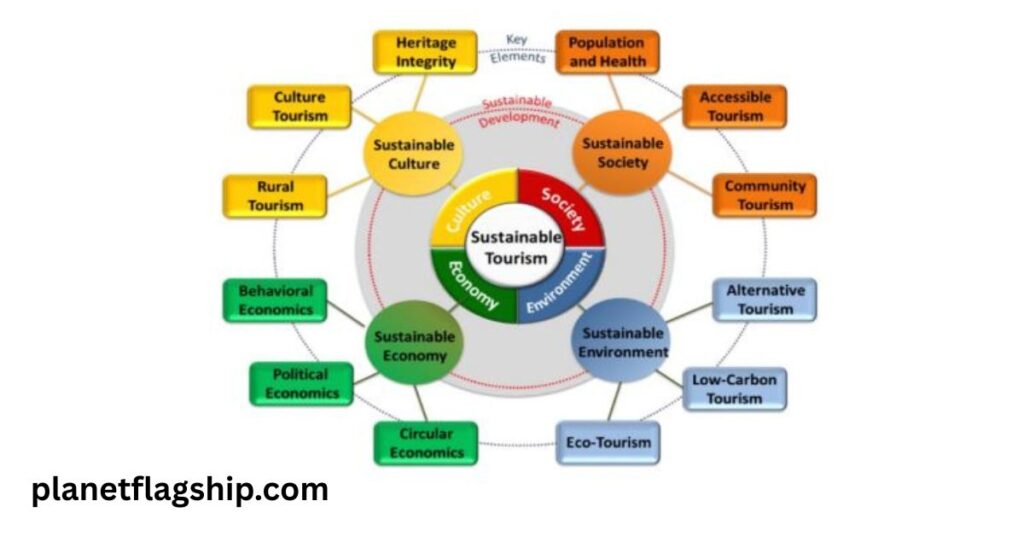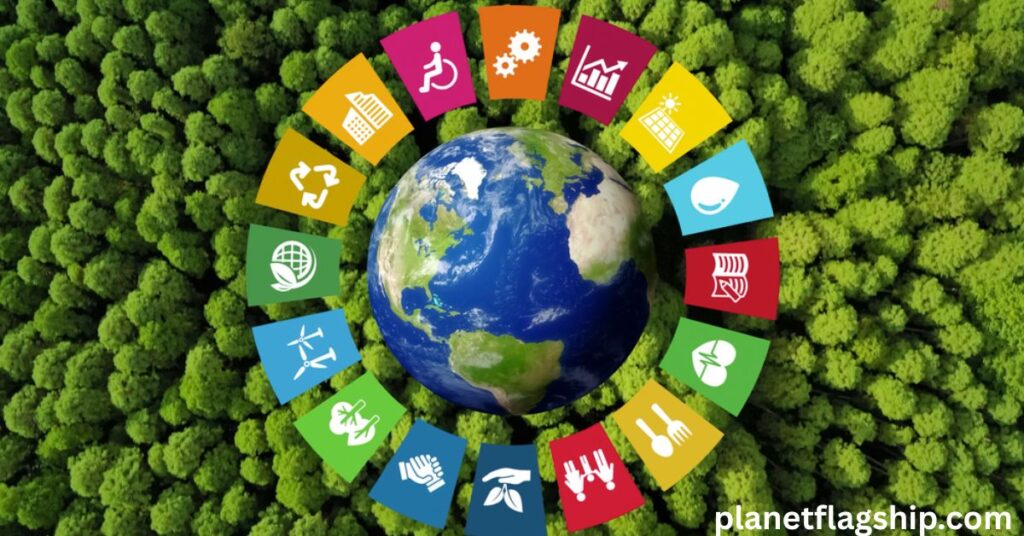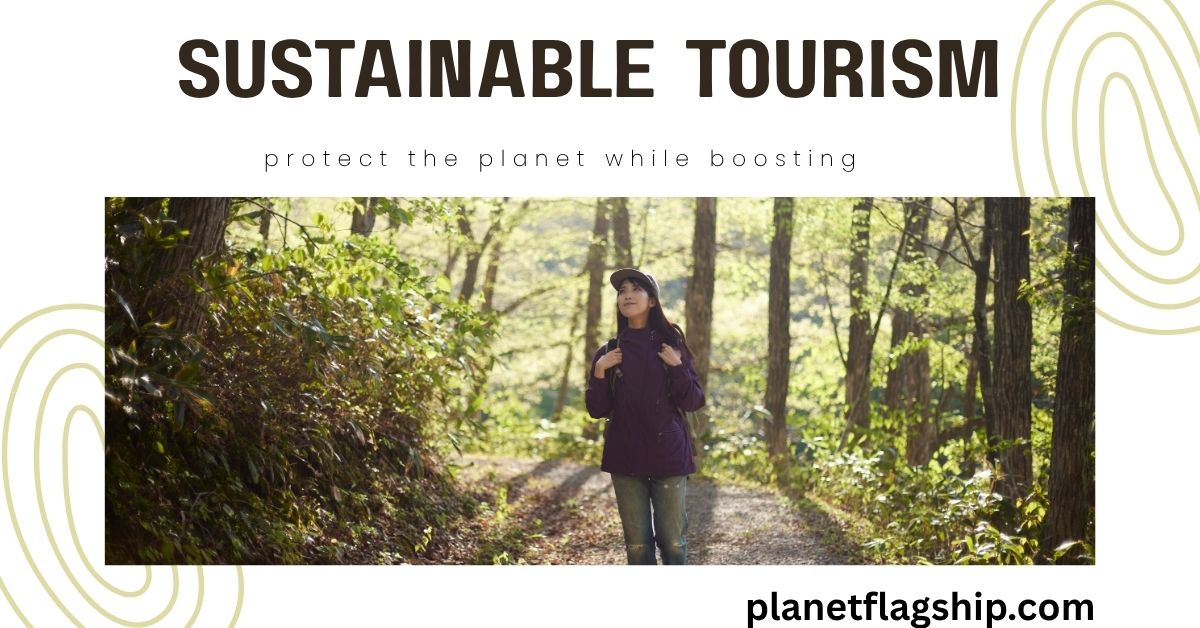Introduction
In the modern travel industry, sustainable tourism is a crucial concept that responds to the growing demand to balance economic growth with social well-being and environmental protection. Despite many people engaging in tourism and over 10% of the world’s economic input being generated by the sector, the tourism industry has been coming under increasing criticism for its role in the depletion of resources, harm to the environment, and decline of indigenous cultures. The exact areas that initially attract tourists are vulnerable to the dangers of conventional tourism if not properly monitored, which may result in overcrowding, pollution, and the exclusion of local people. On the other hand, sustainable tourism offers a framework for ensuring that tourism development does not compromise the global ecological balance or the cultural and social foundations of the communities where it is hosted.
Sustainable tourism is essential as it adopts a holistic approach, aiming to minimize negative environmental impacts. Conserve the ecosystem and preserve cultural heritage while maximizing economic benefits for nearby communities. Sustainable tourism can generate long-term financial possibilities, encourage cross-cultural interactions, and safeguard natural resources for future generations through supporting sustainable travel, creating investments in environmentally friendly buildings, and empowering local people. This approach is important for ensuring the durability and continued appeal of the tourism sector, along with protecting places.

The numerous benefits of sustainable tourism, including its impact on the economy, environment, and society, will be discussed in this review article. It will examine how sustainable tourism can promote local businesses, generate jobs, and attract eco-aware tourists. The investigation will also examine strategies to mitigate the negative environmental impacts of tourism, protect the environment and cultural heritage, and engage residents in the development of tourism. Finally, the research will discuss the possibilities and problems associated with sustainable tourism experiences, providing important information to businesses, policymakers, and those committed to utilizing tourism as a beneficial force.
READ MORE: The Green Startup Boom: How Entrepreneurs Are Leading the Sustainability Revolution
The economic effect of Sustainable Tourism
Job creation and Revenue generation

New research on sustainable tourism highlights the significance of continuous growth as a major cause of economic generation, especially in areas where all industries are in decline. The strategy of Maltese tourism from 2001 to 2030 emphasizes increasing the tourism contribution to the country’s economy, aiding local businesses, and generating jobs, all of which balance the goals of sustainability and economic growth (OECD, 2025). Bibliometric analysis reveals a significant increase in findings and the implementation of green practices in hospitality, particularly by 2020, with our 400 recent research studies highlighting the sector’s potential for diversifying the economy and enhancing resilience. Combined efforts between the government, nongovernmental sectors, and citizens are shown to be important in increasing economic benefits.
Empowerment of community and development of economy at local level
Tourism models that are community-based gain traction, ensuring the economic benefits stay within the small communities and empower residents through participatory management and planning. The World Economic Forum in 2025 emphasizes tourism that can fully support local businesses, decrease poverty, and foster social cohesion through the equal distribution of benefits.
Protection and regeneration of environment
Protection of national and cultural heritage
The preservation and enhancement of cultural and natural assets have grown increasingly linked to sustainable tourism. The case study of Malta states that to monitor and guide the development of sustainable tourism, accurate measurements are needed, such as carbon footprints, waste generation, and the conservation of water and historic management sites. Restorative tourism models are growing increasingly recognized as innovative conservation methods as they aim to enhance and restore ecosystems rather than prevent damage.
Decreasing Environmental Footprints
Rather than sustainability efforts, tourism still accounts for 8% of GHG emissions, and worldwide energy consumption is approximately 10%. Recent studies emphasize the responsibility of the waste sector to address plastic pollution, waste management, and the use of resources, especially in vulnerable destinations such as coastal areas and islands. New technologies, such as artificial intelligence and blockchain, are being explored to maximize resource efficiency and track environmental impact, supporting more effective and transparent sustainability initiatives.
Stakeholder engagement and environmental education
Stakeholder engagement and environmental education are very important in driving sustainable tourism. Stakeholders have been empowered to create stronger futures, such as fossil-free travel destinations, diverse visited services, and improved tourism distribution, leveraging local opinions and knowledge through cooperative seminars and collaborative methods, as seen in Sweden. A feeling of responsibility and shared accountability for environmental outcomes is promoted by these interactive efforts.
Advantages of Sustainable tourism for social and cultural issues
Cultural assets protection
Traditional customs, cultures, and places of historical significance have been preserved and revived through the support of sustainable tourism. Historical sites, museums, and cultures are maintained through the support of tourism, which generates income through admission costs and cultural experiences. Additionally, keeping the value of items also renders them more appealing to the vocational in the future.
Social integration and community engagement
Residents of the area get involved in the preparation, management, and mutual benefit aspects that result in effective, sustainable tourism. Ensuring the growth of tourism aligns with neighborhood needs and opinions, community involvement fosters social integration and reduces inequalities. Based on Neto (2003), enhancing the beneficial impacts of tourism on local communities requires a “pro-poor tourism” approach, which places high value on community engagement and property elevation.
Promotion of peace and exchange of cultures
People from different backgrounds may be more likely to tolerate, understand, and exchange traditions with each other due to tourism. By promoting interaction and cooperation among tourists, citizens, and companies, tourism can help build relationships, foster international trade, and contribute to peace efforts, according to the OECD (2024).
Challenges in Sustainable Tourism
Over-tourism and resource strain
Excessive tourism continues to be the main problem, particularly in popular destinations such as Barcelona, Kyoto, and Venice. The abundance of visitors affects essential assets, including energy and water, which overpowers regional infrastructure and creates traffic. For example, it is expected that pollution from tourism will increase by 25% globally in 2013, contributing to the pressure on the planet. In addition to increasing the cost of housing and displacing residents, excessive tourism contributes to noise pollution and the industrialization of local traditions.
Societal instability and exploitation
Especially in areas with inadequate laws, tourists may take advantage of the local population, leading to poor working conditions and inadequate wages. People may be evicted due to increasing property values, and conventional methods of living could be compromised through the commercialization of culture. People in the area frequently miss out on the economic advantages of the tourism industry, especially when foreign investors recover revenue.
Gaps in the infrastructure and policies
The building structure and legislation laws necessary for environmentally friendly tourism administration are not in place on various occasions. Common issues include inadequate waste management, insufficient biodiversity affecting waste management, and limited capacity to carry out assessments of environmental impacts. Additionally, stricter enforcement of regulations and improved communication between groups are necessary.
Risk of finance
Financial sectors that depend largely on tourists are vulnerable to external shocks, such as pandemics, natural catastrophes, or uncertain political circumstances. Financial resilience can be reduced through excessive reliance on short-term tourism earnings. Additionally, the situation during the COVID-19 pandemic, when global travel dropped drastically, also contributed to this.
Digital destruction and shortages of skill
The tourism sector has both benefits and drawbacks associated with its rapid digitization. While electronic devices may enhance the production and experience of visitors, many places, particularly those in developing nations, require the necessary skills to effectively utilize emerging technologies and data-driven solutions.
Opportunities in sustainable tourism

Increasing interest in sustainable traveling
There has been no greater awareness regarding sustainable tourism. Over 80% of tourists globally reported in 2024 that they had favored environmentally friendly options for traveling. Predictions estimate that the global tourism market will grow from $247 billion in 2023 to $280 billion in 2025, indicating increasing consumer demand for experiences that are both morally and sustainably oriented.
Innovations in policies and regulations
In response, the government, as well as towns, has taken innovative actions. Like Barcelona and Venice, they have implemented eco fees, visiting caps, and increasingly rigorous licensing standards to regulate tourists and preserve cultural landmarks. By adopting these measures, tourists are spread more evenly, hotspots become less stressed, and local communities benefit.
Advances in technology
The tourism industry has been transformed through digital technology. Sustainability and visitor enjoyment have been enhanced through smart source management systems, augmented and virtual reality events, AI-powered consumer data, and smart management of destinations. These technologies offer continuous tracking, customized travel experiences, and efficient use of infrastructure.
Community-based and Sustainable Tourism
New standards have been established through the movement towards regenerative tourism, whereby tourists voluntarily help in environmental maintenance. A system of community-based tourism, in conjunction with heritage preservation, ensures an equitable distribution of benefits and strengthens local communities. These approaches also reduce the risk of societal and wealth leakage.
Investing money in sustainable construction
Places of interest, accommodations, and airlines have made investments in energy from renewable resources, green fuels, carbon offsetting, and green housing. These expenses not only reduce the carbon footprint of visitors but also attract eco-aware visitors and enhance the resort’s competitive edge.
Frequently Asked Questions
How does sustainable tourism help the environment?
Sustainable tourism minimizes waste, protects natural habitats, and promotes eco-friendly practices like zero-waste treks and local resource use. It turns tourism into a tool for conservation rather than exploitation.
Can tourism really support local economies?
Yes. Community-based tourism keeps up to 70% of the revenue within local areas through local ownership of lodges, food, and guides boosting jobs and rural development.
What are the main challenges of sustainable tourism in Pakistan?
Pakistan faces issues like poor infrastructure, lack of regulation, and environmental degradation in sensitive areas like Kumrat Valley and Saif-ul-Mulook. Without proper planning, tourism may do more harm than good.
How does sustainable tourism align with the UN Sustainable Development Goals (SDGs)?
It directly supports goals related to poverty reduction, gender equality, infrastructure, and climate action by creating jobs, preserving culture, and encouraging environmental protection.
What can be done to make tourism in Pakistan more sustainable?
Solutions include investing in eco-friendly infrastructure, regulating visitor numbers, supporting local communities. It using digital tools to track environmental impact and promote transparency.
Conclusion
At the intersection of social responsibility, economic growth, and environmental conservation, environmentally conscious reasoning provides an avenue for ensuring the long-term survival of the global travel industry. As this evaluation indicates, tourism is a crucial component of economic growth, supporting millions of jobs and contributing to GDP. However, if not handled correctly, it also poses significant risks to the environment, historic sites, and the well-being of nearby communities. Excessive tourism, damage to the environment, justice in society, and financial vulnerability are serious problems that must be tackled right away, particularly as the need for travel all over the world continues to expand.
However, there are numerous potential customers in the business sector. Innovations in business procedures, technology, and regulations have been fueled by the growing need for an ethical and environmentally friendly experience while traveling. In addition to minimizing negative impacts, destinations that emphasize community involvement, promote technological change, and make investments in sustainable development are also growing less susceptible and more competitive. Community members have been strengthened through regeneration and sustainable tourism designs, which also ensure that the benefits of tourism are shared more equally.
Government, businesses, and the public work collectively to achieve sustainable tourism and maximum potential, supported by effective legislative structures and contract oversight. Sustainable tourism can protect the environment, preserve cultural heritage, and guarantee sustainable resources for future generations by finding an equilibrium among economic, environmental, and social objectives. The rewards are important and durable, but the path forward requires commitment, innovation, and teamwork.
References
1. Agarwal, S. (2024). Four decades of sustainable tourism research: Trends and future research. Journal of Tourism Research. https://research.cbs.dk/files/104232768/Journal_of_Tourism_Research_-_2024_-_Agarwal_-_Four_decades_of_sustainable_tourism_research_Trends_and_future_research.pdf
2. Chen, S., & Zhang, Y. (2025). Toward green tourism: The role of renewable energy for sustainable tourism in the BIMSTEC region. Frontiers in Sustainable Tourism, 4, Article 1512922. https://www.frontiersin.org/journals/sustainable-tourism/articles/10.3389/frsut.2025.1512922/full
3. Khan, M. A., & Bibi, S. (2022). Impact of tourism development upon environmental sustainability. Environmental Science and Pollution Research, 29(17), 25638–25650. https://pmc.ncbi.nlm.nih.gov/articles/PMC9389488/
4. Turismo de Portugal. (2020). Sustainable Tourism Plan 20-23. https://business.turismodeportugal.pt/SiteCollectionDocuments/sustentabilidade/sustainable-tourism-plan-2020-2023-turismo-de-portugal.pdf
5. Pereira, A. L., & Silva, M. J. (2025). Exploring sustainable tourism research trends: A literature review of the last decade. Academic Conferences International Limited. https://repositorio.upt.pt/entities/publication/10a4cd2d-f4a8-44ab-bb14-3afa677debaa
6. OECD. (2024). Creating economic prosperity through inclusive and sustainable tourism. Organization for Economic Cooperation and Development.
7. Pulido-Fernández, J. I., & López-Sánchez, Y. (2021). Sustainable tourism development and economic growth. Sustainability, 13(4), 2270.
8. Font, X., & McCabe, S. (2023). The contribution of economics to sustainable tourism research. Journal of Sustainable Tourism, 31(2), 123-139.
9. Hall, C. M., Prideaux, B., & Gretzel, U. (2020). Transformative, collaborative approaches for climate change and tourism. Tourism Management, 81, 104164.
10. Neto, F. (2021). A new approach to sustainable tourism development: moving beyond environmental protection. UN Department of Economic and Social Affairs Discussion Paper, 29.

John is a professional blogger and passionate advocate for environmental sustainability. With years of experience exploring eco-friendly practices and green innovations, he shares insightful articles on Planet Flagship to inspire a sustainable future. John’s expertise lies in making complex environmental topics accessible and actionable, empowering readers to make meaningful changes for the planet.
